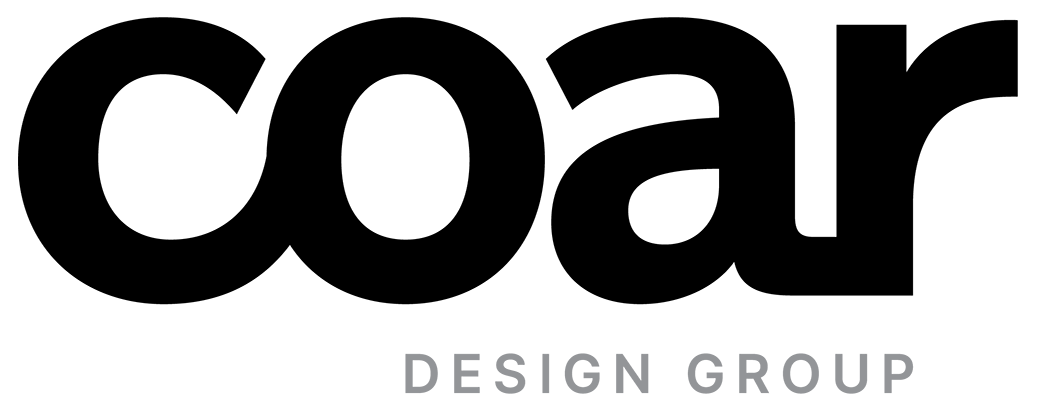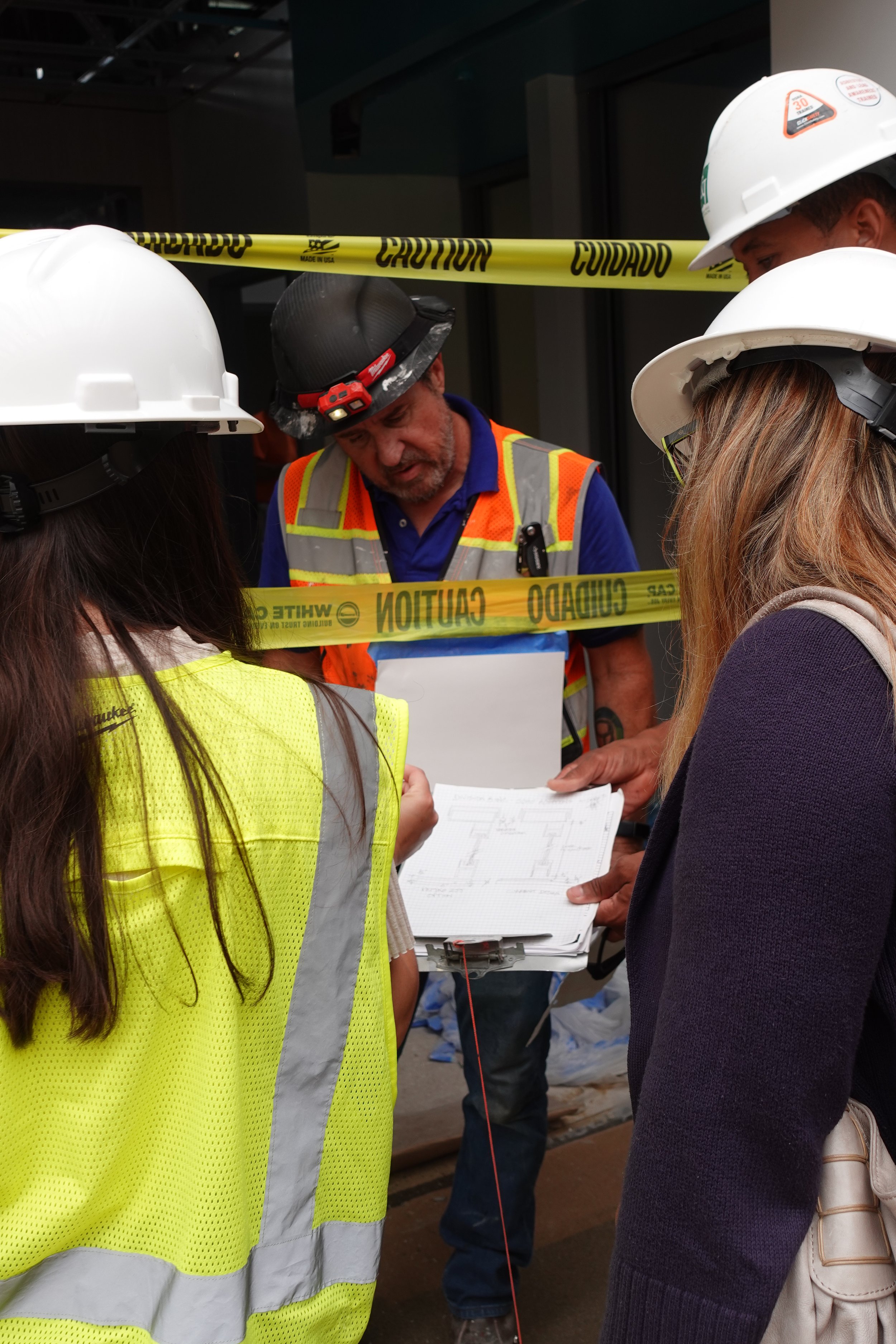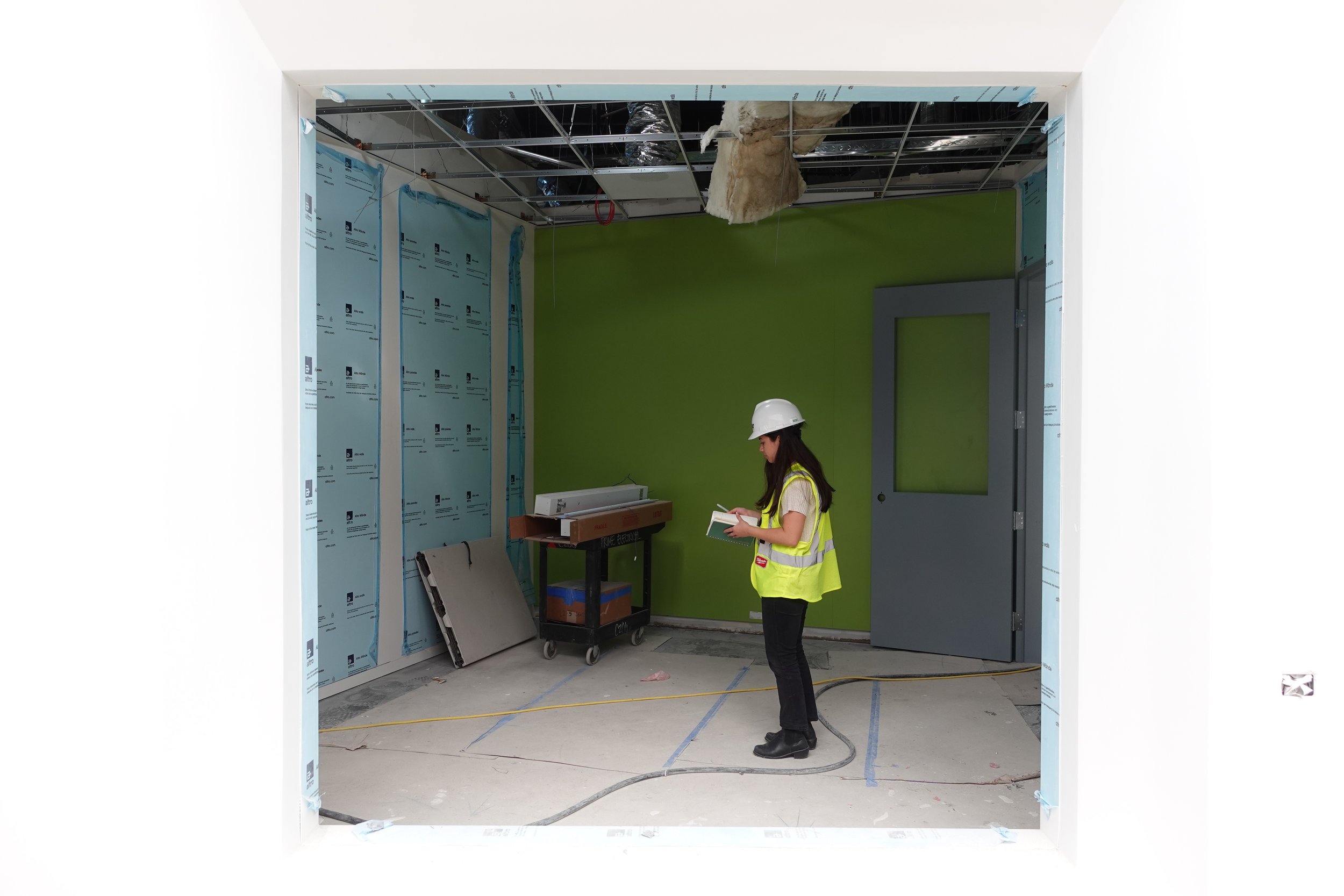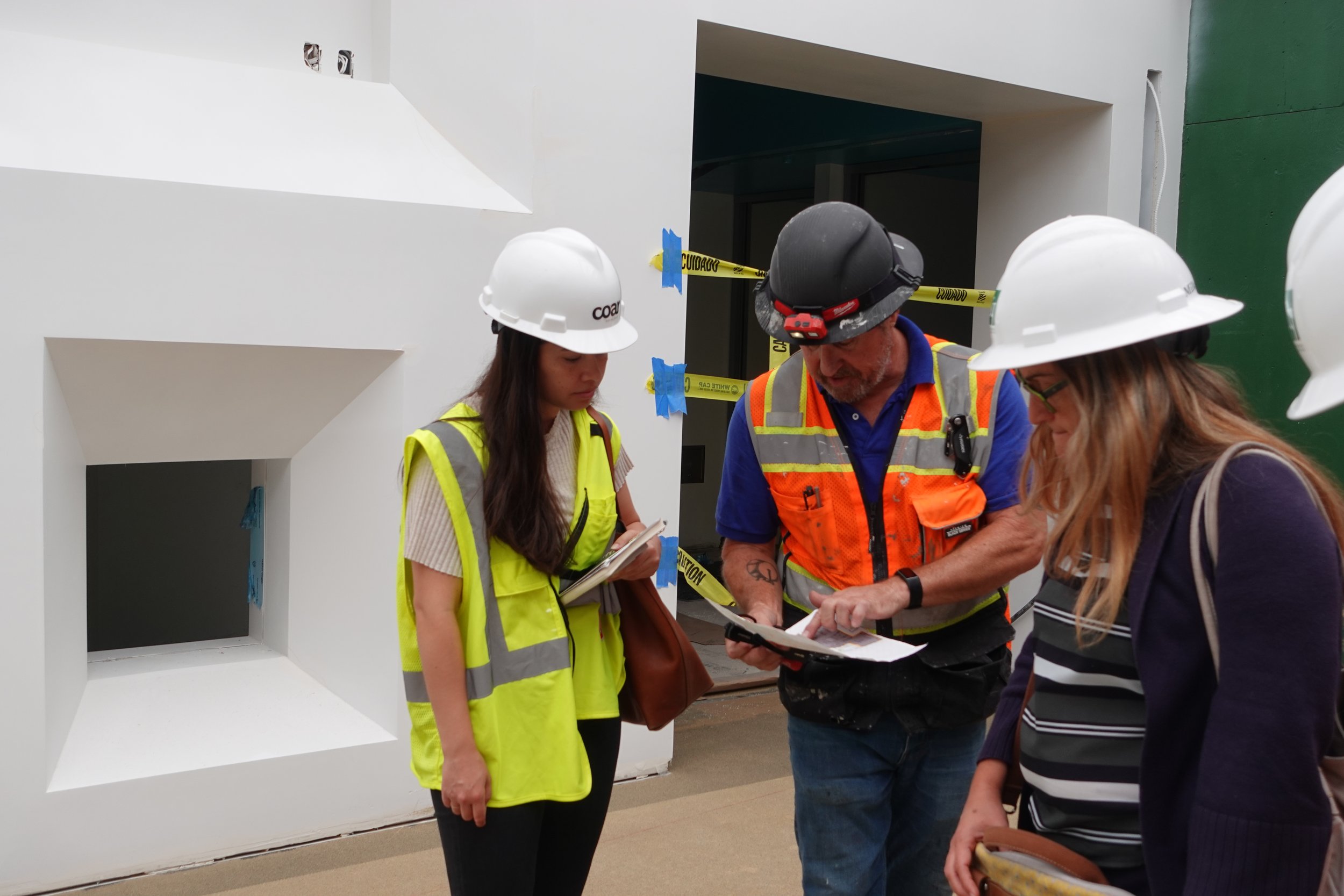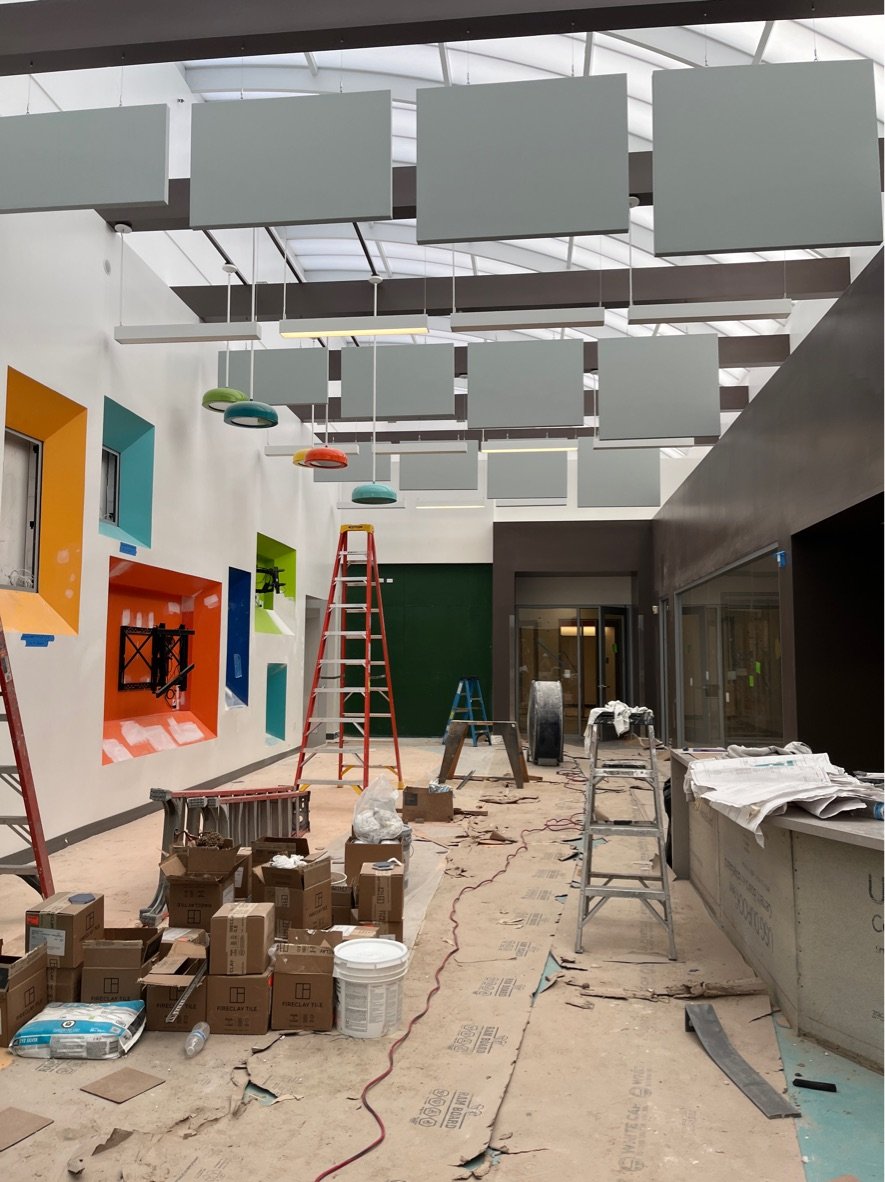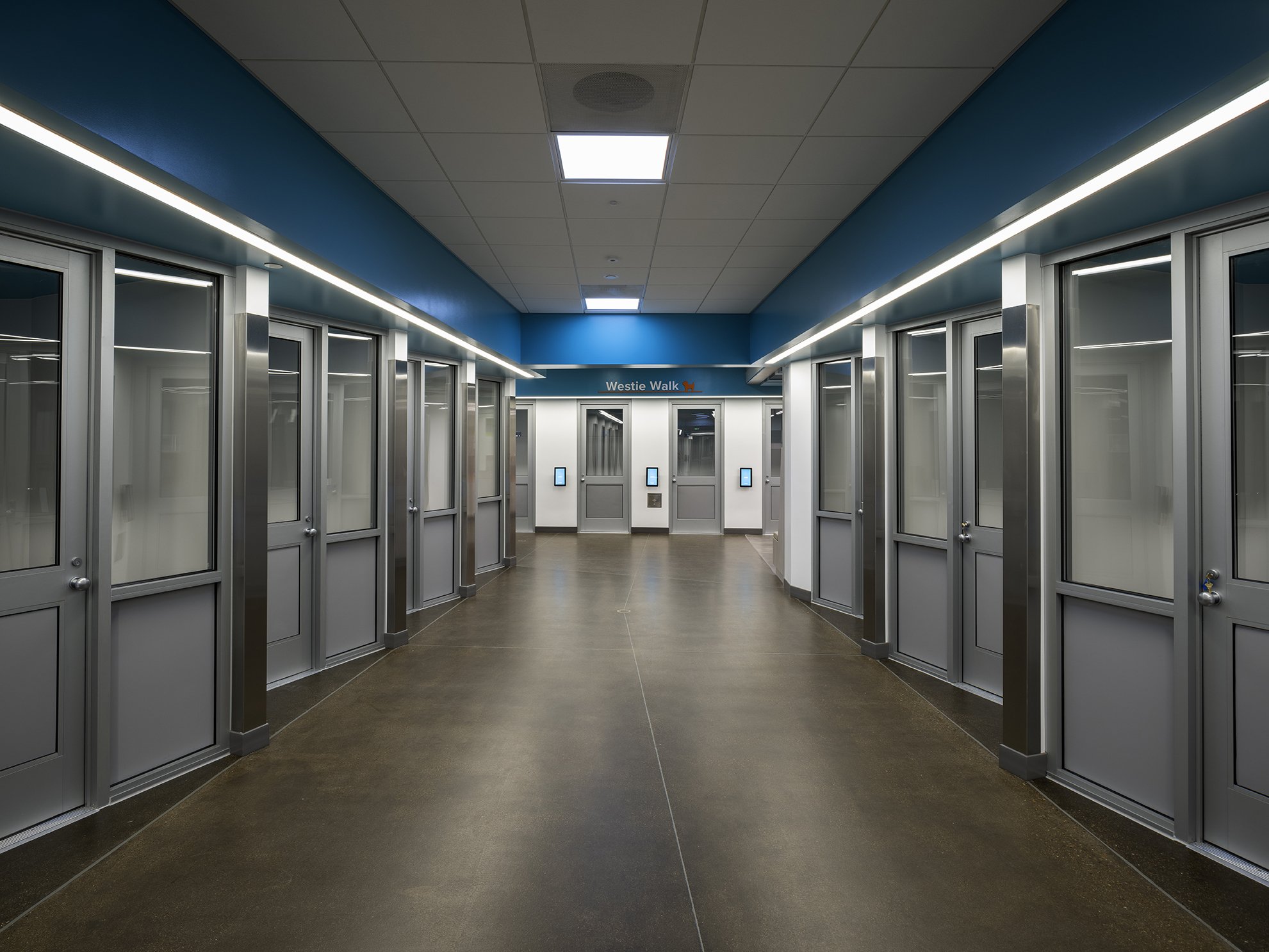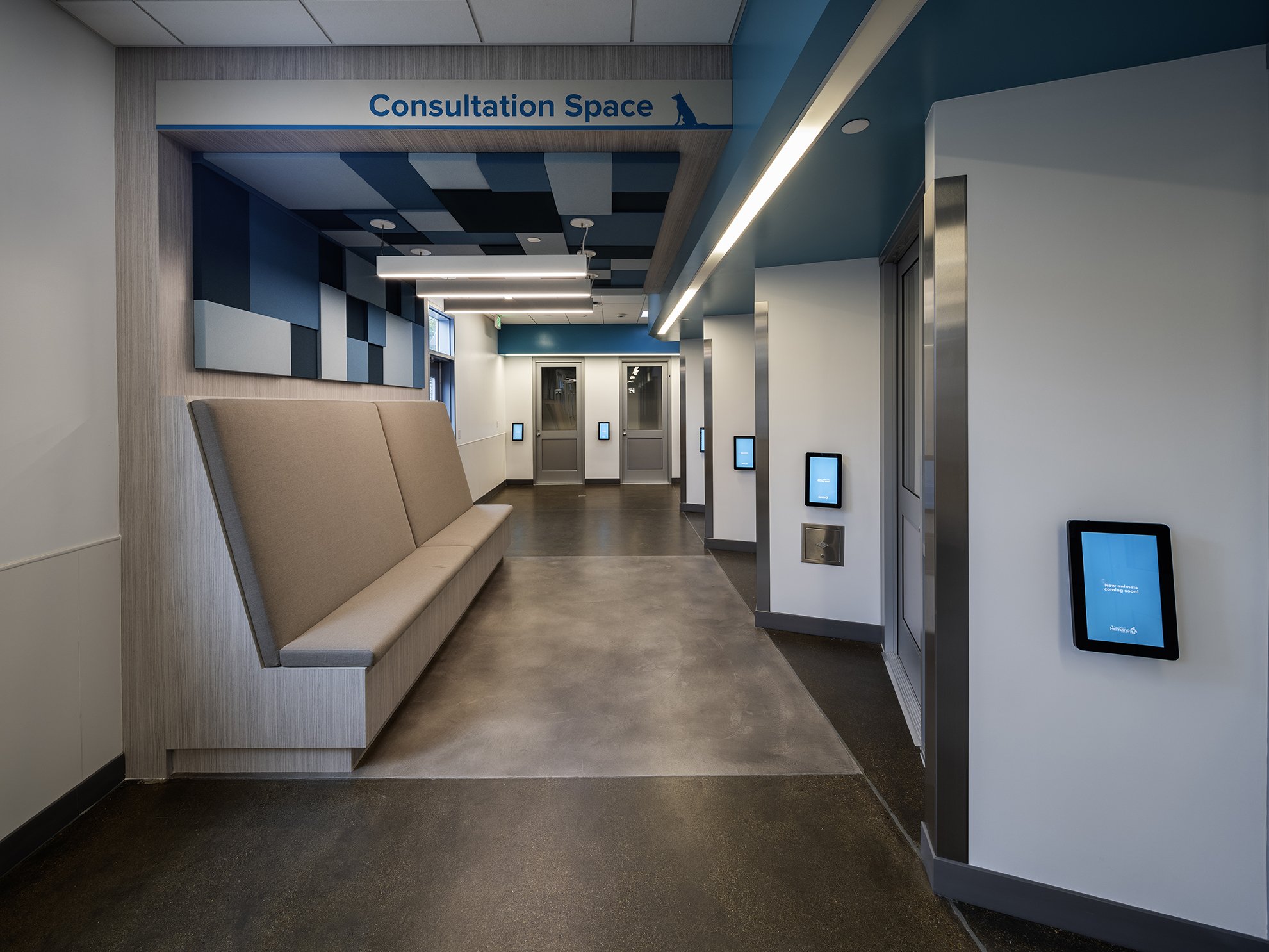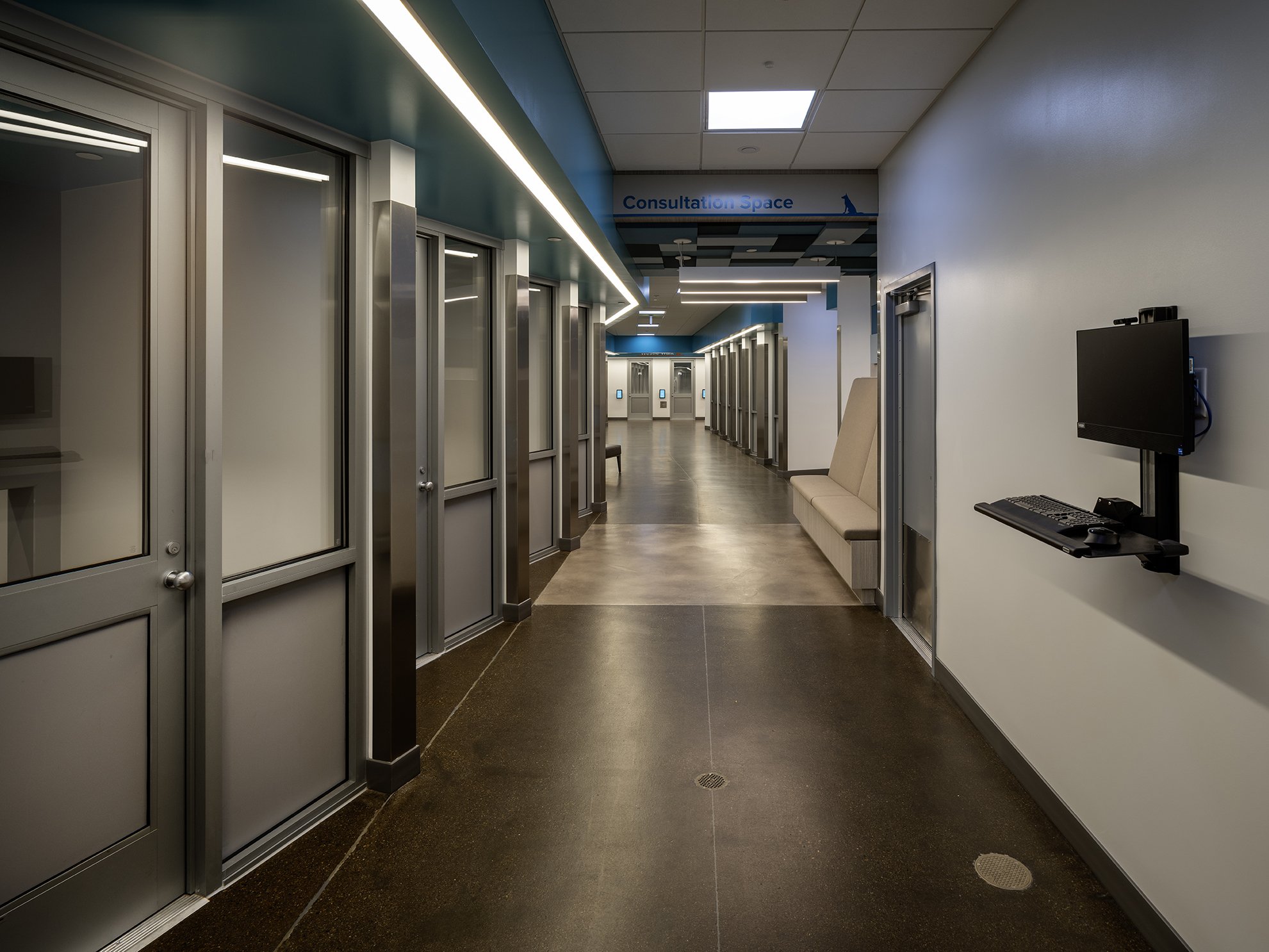Behind the Design: San Diego Humane Society Adoptions Center
When you think of an animal shelter, what comes to mind? What are the sounds – the smells? Is it dark or crowded? You probably aren’t imagining bright orange and teal floors, palm trees, and natural light. At least, not yet. Together, San Diego Humane Society and COAR Design Group are redefining what it means to be an animal shelter.
In February 2024, the doors to the new San Diego Humane Society Adoptions Center opened, marking a significant milestone in a 6.5 year journey of redefining how their animal shelter can look and operate. There were a few primary goals of this renovation – all centered around getting animals into their new homes as quickly as possible and maximizing their quality of life during their time at the humane society.
The Dream Team.
COAR Design Group’s (COAR) relationship with San Diego Humane Society (SDHS) began in 2015, and included the SDHS Administration Offices Remodel, Project Wildlife facility, Behavior Center and Center for Shelter Medicine. What made these projects successful was close collaboration between the SDHS and COAR teams– creating a perfect blend of animal care and architecture expertise. COAR Design Group Architect, Haley Baquian, reflected on the collaborative process that COAR and SDHS have developed.
“We love working with the San Diego Humane Society team,” Haley said. “Throughout this entire process they have been heavily involved, which we really appreciate because they are the animal experts. We leaned on them and their expertise throughout the entire design process. They were involved in every design decision and over the past three plus years; we've been meeting with them every week, at least once a week, to go over the design, to check in, and to make these decisions together. The collaboration process with the team has always been really fun.”
Another key team member is contractor Johnson & Jennings (J&J). Their team was involved throughout pre-construction, helping with true value engineering of the project. They informed constructability and detailing of the design along the way, and brought the project design to life. Together, the three organizations dedicated years of meticulous planning and collaborative effort to fulfill SDHS’ goals for the space.
“The most successful projects come to fruition when really all the stars align or when there's a common set of values that are shared between the client, the contractor, the builder, and the community that we serve,” COAR Design Group Principal Matt Kingdon said. “In this case, we have a very unique client with a very clear vision of what they wanted this space to be. By working with them to understand how they wanted to engage with their guests and how they wanted to care for their animals, we were able to clearly make decisions along the way and drive the design process forward.”
Throughout the Adoptions Center renovation, COAR, SDHS, and J&J worked together through several obstacles, from choosing the most dog-proof materials to navigating the COVID-19 Pandemic and how that may or may not change operations of the adoptions center.
“One of the best things about this relationship is that everyone at the table values good ideas, and no one feels like they have to stay in their lane,” Matt said. “There are no bad ideas. And because we work together so much, and we've built this great relationship that everyone feels safe to kind of share their ideas and we all have the same goals in mind. We all love animals and ultimately, we're trying to create the best projects for the staff, for the animals, and for the potential adopters.”
All Things Considered.
When re-designing the adoptions center, there were three primary points of view.
The visitors. How will visitors experience the space and create meaningful connections with the animals?
The staff. What are their day-to-day operations, and how will the space support them?
The animals. How are we creating opportunities for animals to thrive?
The transformation of the Adoption Center exemplifies this commitment to engaging all three end-users. The ultimate goal: Enhancing the lives of the animals in SDHS’ care and decreasing the animals’ total length of stay in the shelter.
“Our visitors or potential adopters were definitely top of mind as we went through the design process for the space and they took care to try to develop the space in a way that invited somebody to kind of stop and take a moment to learn a little bit more about each animal,” Jane said.
The new facility has ample space for both staff and guests to interact with the animals. Staff and volunteers can take dogs to the agility yards for outdoor play and exercise. A large “aquarium” within the lobby showcases groups of cats playing and snuggling. There are multiple interaction rooms where visitors can have one-on-one time with the animals they want to adopt.
“We have tried our very best to incorporate the animal’s perspective down to the colors of the walls,” Jane said. “There are lots and lots of things that kind of animal welfare research tells us about, about space and providing as low stress an environment as we can. And this probably drives people crazy sometimes, but we very much keep the animals in mind as we're going through this, along with our animal care folks.”
What a Dog Wants, What a Dog Needs.
The intentional design of the space encourages visitors to engage with the animals on a deeper level, connecting with all of the senses, and ultimately increasing the likelihood of successful adoptions. One of these key features is the sawtooth design of the dog habitats, which staggers the dog habitat entrances. This design reduces the amount of sight lines between dogs, reducing reactive barking, and creates an intimate space where visitors can ‘step into the habitat’ and connect with each dog. Each entrance also features a touch screen where visitors can see photos and details about the dog within.
“[The dog habitats are] one of the areas where we really had to come together as a team and lean on San Diego Humane Society for their expertise, lean on our contractors and our engineers for their expertise, and come together and try to solve some of these challenging design problems for the dogs,” Haley said.
The design eliminates distractions and allows visitors that one-on-one connection.
“Once you find an animal that you want to adopt or that you're interested in adopting, you're excited and you're feeling those emotions and you don't want to leave that animal,” Matt said. “You want to go through this adoption process with that animal.”
Not only can visitors connect more intimately with the animals, but the staff as well. The redesigned adoption center offers San Diego Humane Society staff a more efficient and comfortable work environment, recognizing their vital role in providing quality care for the animals.
“The staff were definitely a big, big consideration in the design and were really involved in the design process along the way,” said Jane.
As experts on each of the animals within their care, a key element was ensuring that the staff would have the opportunity and space to directly interact with visitors and the animals.
“One of the ways we did challenge the San Diego Humane Society to change their operations is by getting the adoption counselors out onto the adoptions floor,” Matt said. “How can we get them moving throughout the space, engaging with different guests and not stuck behind a desk or using a clipboard to fill out complex paperwork? By incorporating workstations and different scales of spaces throughout the facility, we're able to get adoption counselors out onto the floor to conduct these adoptions effectively.”
Setting the Standard.
As we celebrate the opening of the redesigned Adoptions Center, we are filled with anticipation for the positive impact it will have not only on the San Diego community, but animal shelter design nation-wide.
“Shelter design is always changing and it's important that we are not stagnant and we're always looking for opportunities to improve operations, improve housing conditions,” Haley said. “So that's one of the things that has been really important to both us and San Diego Humane Society throughout the entire process is looking at what's been done before questioning it. And if it's not working, then proposing a new solution.”
San Diego Humane Society, COAR Design Group, and Johnson & Jennings studied the ins and outs of the facility to ensure the space allows the animals to be cared for in the best ways possible.
“We all invested a lot of time and energy into making this project the best that it could be,” Haley said. “And I think we all feel very proud of what we've been able to accomplish through the design and construction, and we're all excited to get the animals in here and get them adopted.”
